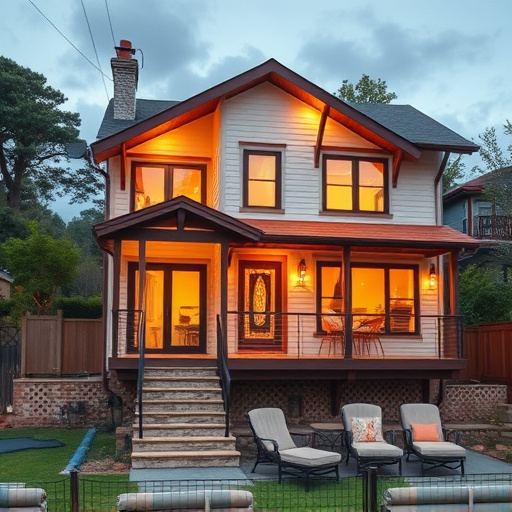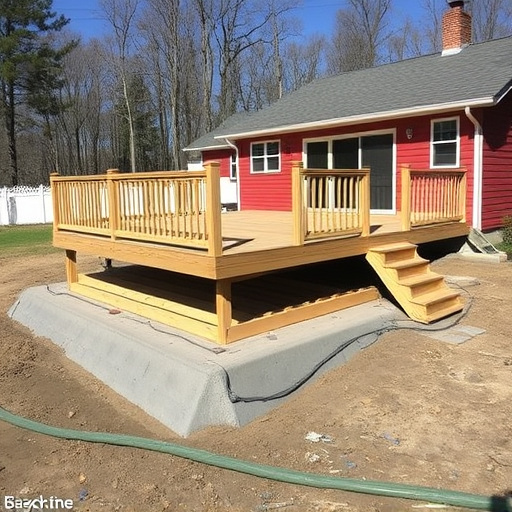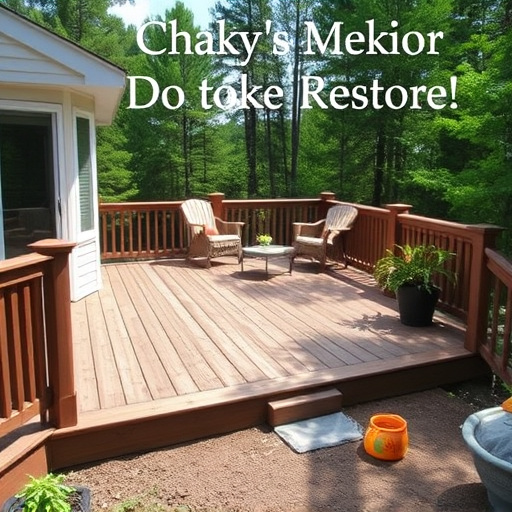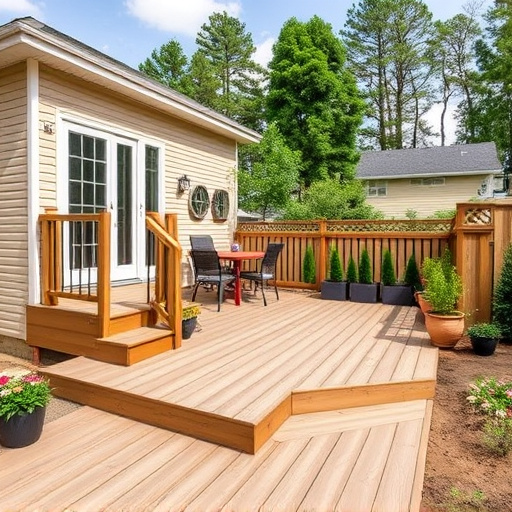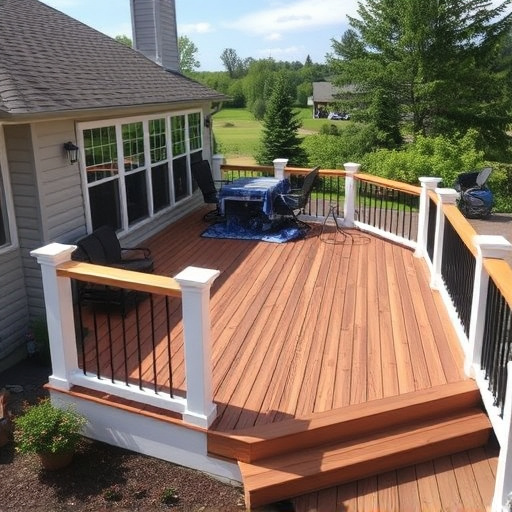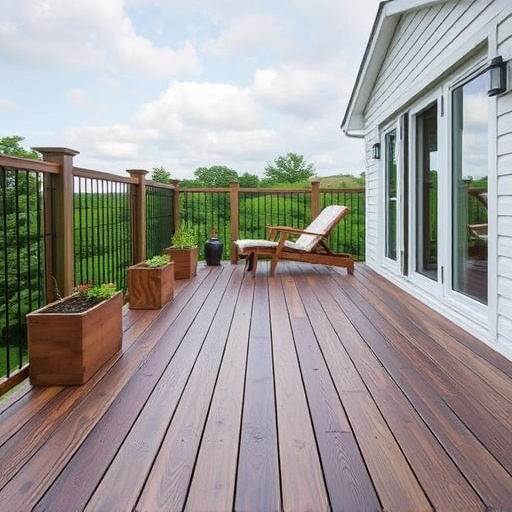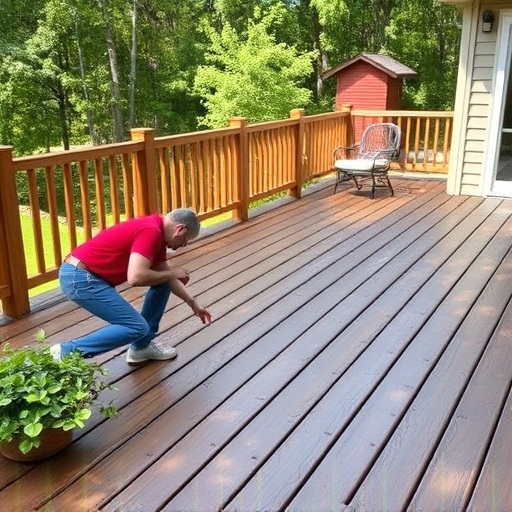Deck restoration involves thorough inspection, cleaning, and repair to eliminate hazards like slipping and splinters caused by mold, mildew, weather exposure, and lack of maintenance. Key steps include repairing damaged boards, fixing structural issues, treating wood against rot and mold, and using high-quality, slip-resistant materials like textured rubber or composite decking. Regular inspections ensure longevity, enhancing safety and maintaining the deck as a visually appealing exterior feature complementing home improvements.
“Elevate your outdoor space with a focus on safety and durability through comprehensive deck restoration. This guide delves into prevalent deck issues such as slipping and splinters, offering insights that prevent accidents and enhance comfort. We provide a step-by-step approach to restoration, ensuring your deck is not just safe but also long-lasting. Additionally, we explore the selection of safe and durable materials, crucial for maintaining a well-restored deck over time. Discover how these strategies transform your deck into a secure sanctuary.”
- Understanding Common Deck Issues: Slipping and Splinters
- Restoring Decks: Step-by-Step Guide to Safety
- Choosing Safe, Durable Materials for Longevity
Understanding Common Deck Issues: Slipping and Splinters
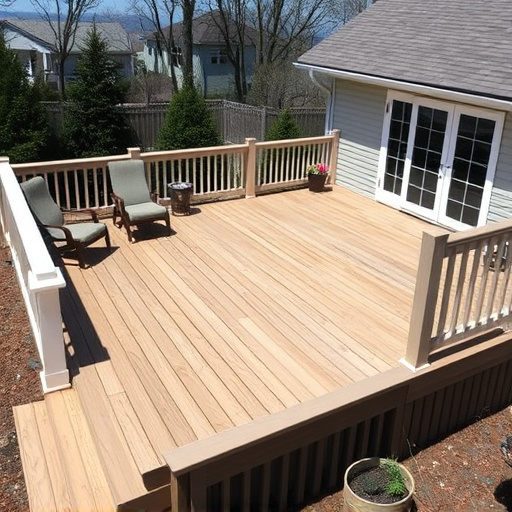
Decks are a popular feature in many homes, providing outdoor living spaces to enjoy and entertain. However, over time, decks can develop common issues that pose safety hazards, such as slipping and splinters. These problems often arise due to material wear and tear, weather exposure, and lack of proper maintenance. Slipping occurs when surfaces become slick from mold, mildew, or oil buildup, increasing the risk of falls, especially in wet conditions. Splinters are caused by loose, warped, or damaged wooden boards that can puncture shoes and clothing, leading to discomfort and potential injury.
Proper deck restoration addresses these issues head-on. It involves a thorough inspection, cleaning, and repair process. By eliminating slipping and splintering hazards, deck restoration not only enhances safety but also increases the longevity of the structure. This includes repairing or replacing damaged boards, fixing structural issues like loose railings or steps, and treating wooden surfaces to prevent rot and mold growth. For commercial roofing and siding repairs, regular maintenance is equally crucial, ensuring that exterior features remain safe and aesthetically pleasing for businesses and their patrons alike.
Restoring Decks: Step-by-Step Guide to Safety
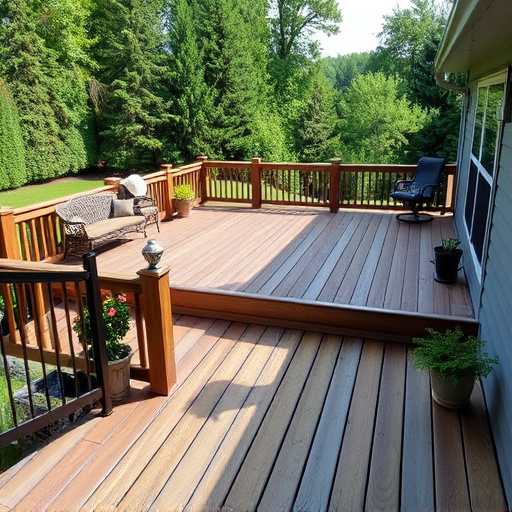
Restoring a deck isn’t just about aesthetics; it’s a crucial step to enhance safety and prevent hazards like slipping and splintering. Here’s a comprehensive, step-by-step guide for homeowners looking to undertake this project. Begin by inspecting the entire deck, identifying worn or damaged boards, rotted planks, and any loose fasteners. Next, carefully remove the old, hazardous materials while ensuring proper disposal according to local regulations. Once cleared, prepare the surface by sanding to create a smooth foundation—a critical step in preventing future issues.
After preparation, it’s time for replacement. Install new boards, ensuring they are securely fastened with appropriate fasteners designed for outdoor use. Consider high-quality materials resistant to rot and decay to guarantee longevity. For areas prone to extreme weather conditions, think about adding a protective coating or sealant. Lastly, regularly inspect the deck after restoration, addressing any new issues promptly. Incorporating these steps not only enhances safety but also ensures your deck remains a safe, enjoyable space for years to come, complementing your residential siding and roofing as a well-maintained outdoor oasis.
Choosing Safe, Durable Materials for Longevity
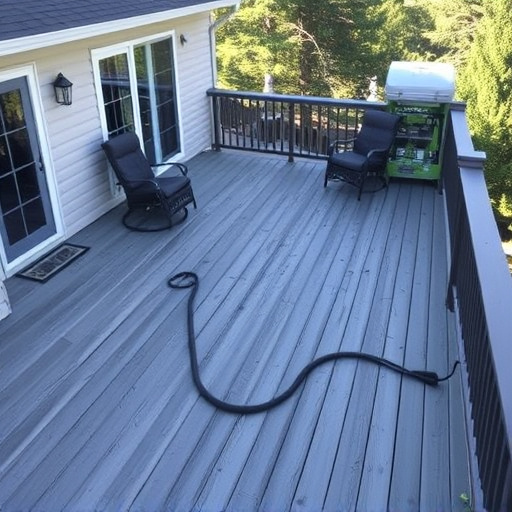
When it comes to deck restoration, choosing the right materials is key to eliminating slipping and splintering hazards while ensuring longevity. Opt for high-quality, slip-resistant surfaces such as textured rubber or composite decking. These materials offer superior grip, reducing the risk of accidents on your deck. Additionally, consider using non-slip strips or coatings on existing wooden decks to transform them into safe, durable structures that can withstand the test of time.
For long-lasting results in deck restoration, homeowners should steer clear of traditional wood decking that’s prone to rot, mold, and splinters. Instead, explore low-maintenance alternatives like aluminum or vinyl decking, which are resistant to fading, cracking, and warping. Incorporating these safe and durable materials into your deck restoration project not only enhances the overall aesthetics but also guarantees a safer outdoor living space for years to come, complementing other exterior home improvements such as roofing services and residential siding.
Deck restoration isn’t just about enhancing aesthetics; it’s a critical process that eliminates slipping and splintering hazards, ensuring your deck is a safe haven for years to come. By understanding common issues, following a comprehensive step-by-step guide, and selecting durable materials, you can transform your deck into a safe, inviting space. Embrace the process of deck restoration as a proactive measure to prevent accidents and enjoy a well-maintained outdoor oasis without concern.


